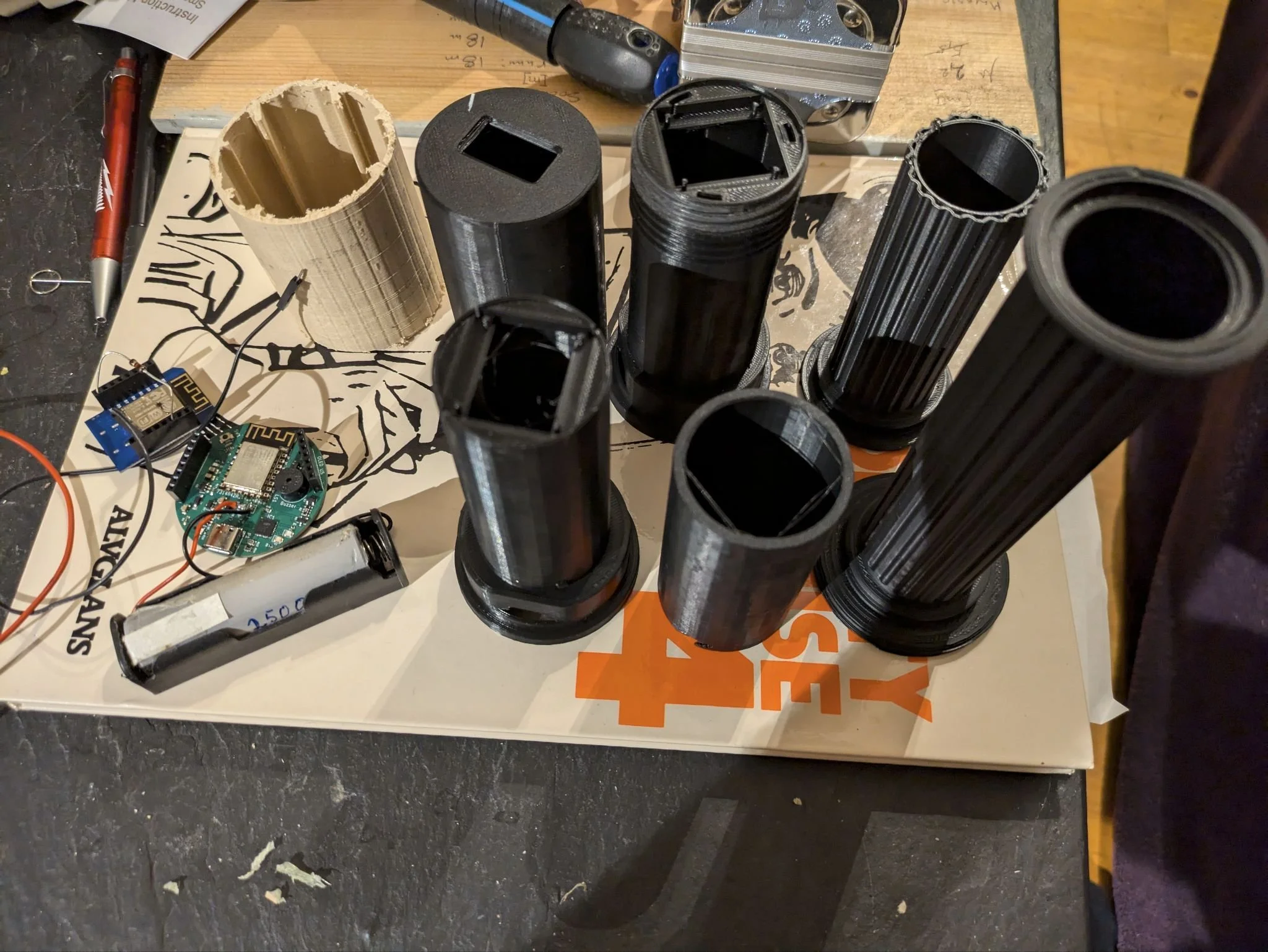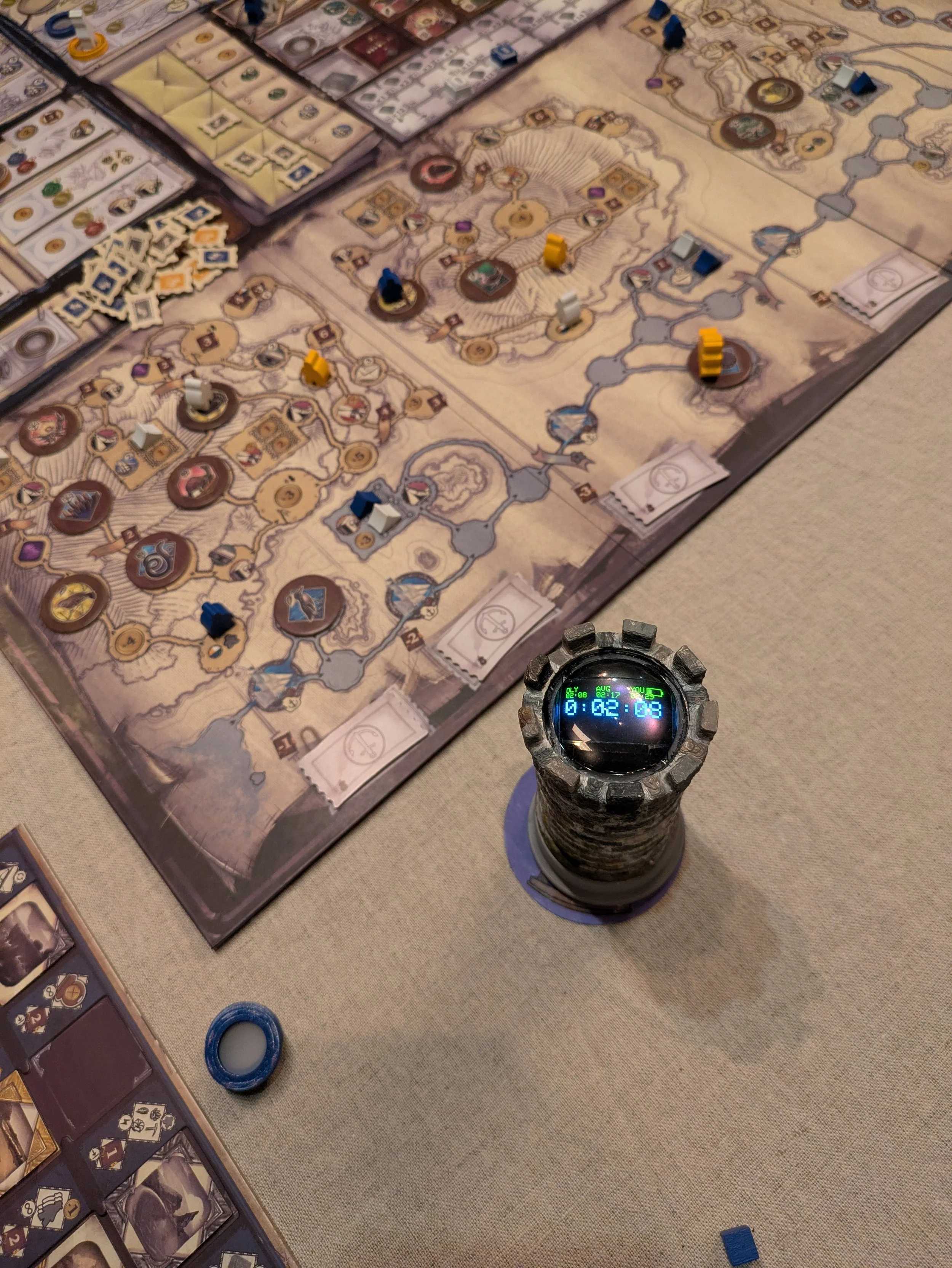The History of the Board Game Timer and Making it Happen
Hi! I’m Christian and I love board games. My friends do too, but we have varying levels of time available to play together. Many of my friends have obligations, early bed times and commitments that include not playing board games, somehow.
Someone politely nudge my friend to make a move?
My group plays a variety of games and especially likes heavy euro games, which normally tend to take several hours to finish. We tried various methods of time control, like a verbal agreement of “let’s finish by 10pm” or having someone do the game setup in advance, preordering dinner and committing to doing the cleanup immediately once we finished. Even with these precautions, players sometimes tend to forget that it's their turn or get lost in their complex optimization scheme — like a piece of software crashing and needing to restart."
Putting a sand timer in front of a friend like that felt rude and a somewhat crude attempt to make the game finish before bedtime. It doesn’t make any gentle audible reminders, doesn’t understand turn order or game phases, only has a fixed time like 60 seconds, and needs to be (sometimes slowly) reset each time it is used.
Hence, faced with this important dilemma, I have been developing Timebox. A board game timer so flexible that you (in theory) can use it with any board game.
An early prototype. Surprisingly, it can be brought as carry-on luggage.
Timebox can do a bunch of different things when it comes to time control.
It works with variable turn order
It is configurable for each game with a bunch of different timer types (simple delay, increment, pool timer etc.)
It can audibly remind you that it is your turn still and that you should make a move
It can start the correct time for a player instantly when their turn starts
It can remember how much time each player has spent and modify it dynamically like a chess or go timer
It can easily be paused for checking rules, eating food or some other type of break
It can keep statistics on time spent
(... and much more)
I thought it was important to be able to do all of these things without breaking immersion and interfering with the table presence of the game. I didn’t want players to have to pull out phones to pass around with interrupting notifications or force everyone to install some app.
For table presence, I wanted it to look like a board game piece while still being useful. Being something that is supposed to be used for a variety of different games, I thought it was important to make it able to blend in. It can’t have a single specific art style, and it shouldn’t look like a distracting piece of technology that takes away from the game. I also wanted the interface to be user friendly and a natural part of the game. Not something you have to reach to press, flip around, or cables with buttons running along the table. I also despise the thought of trying to sync many battery powered devices with wireless technology.
So after a lot of tests with my group, I realized that moving a piece around felt natural as many games already do this with a starting player marker. I noticed that it sometimes needed to be passed quickly and shouldn’t be brittle, hard to find nor hard to grab so I eventually settled on a baton-shaped piece with swappable skins to blend in with the game.
Prototype shells.
Moving it from player to player once you are done with your turn
We started to quite like it in our group and we use it with almost every game now. We have different settings for different occasions and game combinations that work well for us that I can tell you about in a later update. I will say that for new games, where we’re still learning the rules and want a bit of extra time, we have some interesting settings that don't add any stress, but still keeps the game going.
We’ve all been backing more crowdfunding games than we could previously manage to play. This invention has enabled us to play so many more games that had long been shelved due to concerns about time constraints.
So back in October of 2024, me, my sister and a couple of friends took the device to Spiel Essen where we showed the finished prototype to real board gamers (probably quite a few of you reading this saw us there).
The feedback from Spiel Essen was fantastic. While I will not be able to incorporate all of it for the first version of the Timebox, I have it all written down and organized and hope to do as much as is feasible for future versions.
After gathering further feedback at Speilwarenmesse in February, I’ve been working with partners and factories to get the device ready for production. In the meantime, play testing and feature development continues.
Stressbotics. A space skin is the most requested skin. Concept art submissions welcome. The Timebox is in the top right corner.
Darwin’s Journey, testing out a new timer type
If you are interested in collaborating with us on incorporating the Timebox natively in your game, contact me.
Christian









